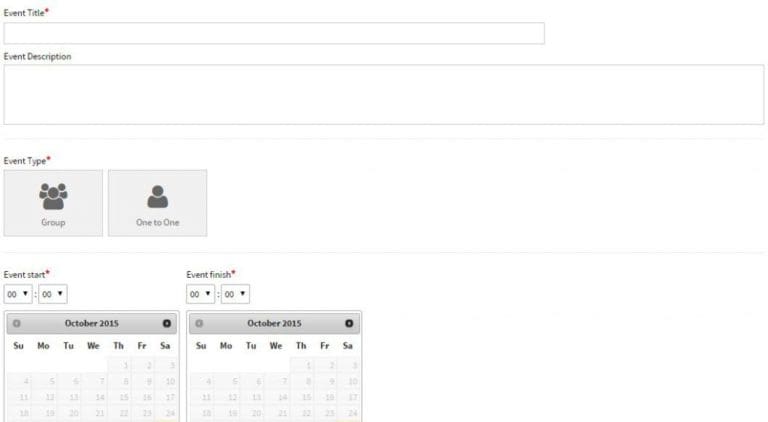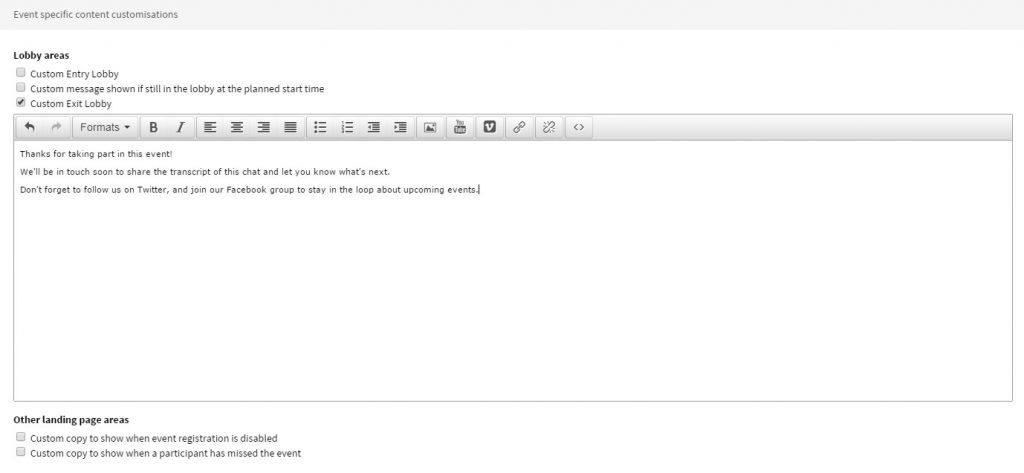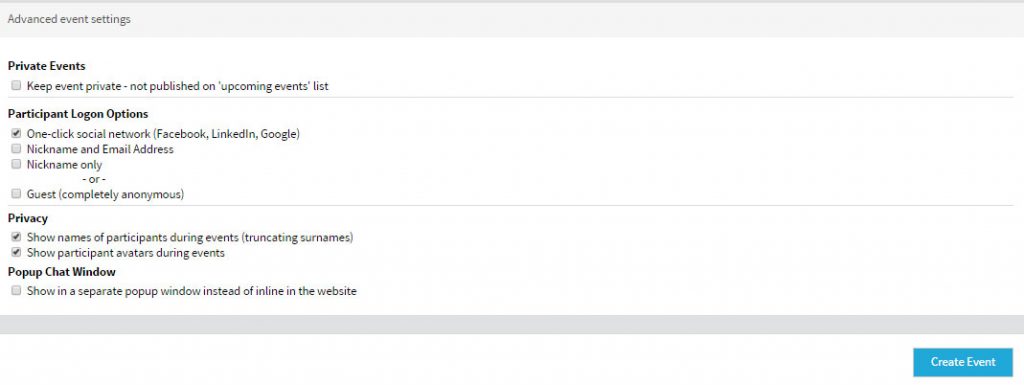Scheduling a Group Event
- How-to Guide
- Logging On
- Your Dashboard
- Scheduling a Group Event
- Scheduling a 1-2-1 Event
- Editing an Existing Event
- Hosting a Group Chat Event
- Hosting a 1-2-1 Chat Event
- Sharing Media in an Event
- Live Streaming with OBS
- Data and Content After the Event
- Editing Content
- Media
- Custom Email Templates
- Managing Users
- Network Connectivity
Scheduling a Group Event
From your dashboard click on ‘Schedule new event’ to arrive at the following screen:

Create your Event Title and Event Description. These are brief descriptions of the event, for example:
| Title | Meet the Grad team | | Description | Chat to our team & find out more |
You have an unlimited character count for both the title and description, but these will be truncated after 27-29 characters (but still readable to the participant clicking ‘read more’ on the list of upcoming events). We advise that you try to keep the title short and snappy, but use a longer description if you need to. The description is also appended to the reminder emails sent to the participant, so you can be as verbose as you need to here.
Move down the page and click on ‘Group’ to choose a group event type.
If you have established any teams (see the Managing Admin Users section), you can restrict moderation access to one of those teams. As well as being a simple way to control access to certain events for other moderators, this also keeps the Live and Planned Events table on the ‘Live Events’ page cleaner). If you have established any teams, the following appears:

If you leave this dropdown set to ‘Everyone’, all moderators on your Control Panel account will have access to the event. If you wish to restrict access only to a certain team, select it from the list.
Choose your start and finish time and the date of your event.
Tip: Remember to leave enough time to promote the event using your social channels and databases. The length of the chat is up to you. If you are involving stakeholders from around the business a short (45 mins) chat might work better for their diaries. If it’s just your team, you could consider a rota system of moderation over a longer time period, which we’ve seen work well for the open-day format.
You can allow users to register before a group event and also cap the number of participants. This allows you to monitor the uptake of the event and by capping, allows you to manage the experience you’re able to provide.
Select the option marked ‘When an event is full, collect user’s email address’ and the user will be prompted to provide their name and email address when attempting to register for a full event. The details collected can be found both before the event begins by clicking on ‘Edit’ from the upcoming events list, or afterwards by clicking on ‘Show’ on a previous event. (see ‘Data and Content after the event‘)
As a rule of thumb for a group event, cap the amount of users at around 50-60 based on a moderation team of 3-4. Bear in mind that not every user who registers will attend on the day and if you are running an event over a longer timeframe, not all users will join at the same time / stay online for the entire chat.
Users who try to register when the capped amount is reached will get a message saying that the event is full. You can add additional content to this message directing them to follow you on Twitter (for instance) if you plan to share future events in this way. You can do this in the ‘Event specific content customisations’ section. Tick the box next to any of the sections you want to edit and make changes in the editor window that appears. These changes only affect the event you’re creating here, so you can tailor the content with specific information around the chat topic. See the Editing Content section for more information on these.

Choose the participant logon options you prefer. We recommend choosing both ‘allow participants to join with a one-click social login’ as well as ‘Nickname and email address’ to give two options to participants.

When you have done this, click on ‘Create Event’ at the bottom right of the screen. The platform creates a unique URL per event and you can send this link, or the link to your landing page out to your social channels and databases to encourage users to join your chat.

Normally the event will now appear on the landing page. Alternatively you can create a Private Event, by ticking the ‘Keep event private – not published on ‘upcoming events’ list’ box at the top of the Advanced event settings section. This event won’t be shown on your landing page and therefore you need to send the platform generated URL out to whoever you are inviting.
Tip: Typically private events are used for in-process users – perhaps keeping a group warm prior to an event.

